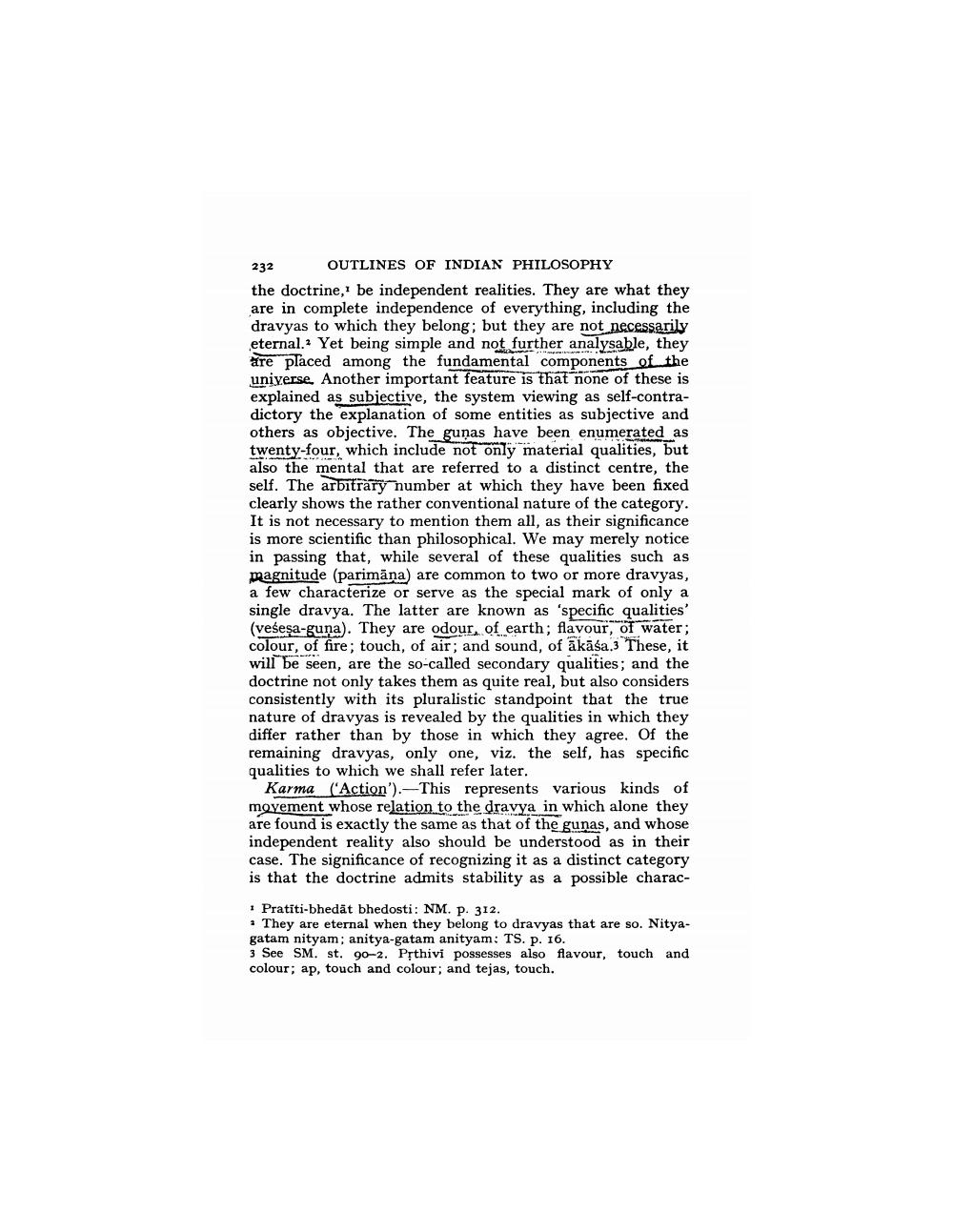________________
232
OUTLINES OF INDIAN PHILOSOPHY
the doctrine,1 be independent realities. They are what they are in complete independence of everything, including the dravyas to which they belong; but they are not necessarily eternal. Yet being simple and not further analysable, they are placed among the fundamental components of the universe. Another important feature is that none of these is explained as subjective, the system viewing as self-contradictory the explanation of some entities as subjective and others as objective. The gunas have been enumerated as twenty-four, which include not only material qualities, but also the mental that are referred to a distinct centre, the self. The arbitrary number at which they have been fixed clearly shows the rather conventional nature of the category. It is not necessary to mention them all, as their significance is more scientific than philosophical. We may merely notice in passing that, while several of these qualities such as magnitude (parimana) are common to two or more dravyas, a few characterize or serve as the special mark of only a single dravya. The latter are known as 'specific qualities' (veseṣa-guna). They are odour, of earth; flavour, of water; colour, of fire; touch, of air; and sound, of ākāśa.3 These, it will be seen, are the so-called secondary qualities; and the doctrine not only takes them as quite real, but also considers consistently with its pluralistic standpoint that the true nature of dravyas is revealed by the qualities in which they differ rather than by those in which they agree. Of the remaining dravyas, only one, viz. the self, has specific qualities to which we shall refer later.
Karma ('Action'). This represents various kinds of movement whose relation to the dravya in which alone they are found is exactly the same as that of the gunas, and whose independent reality also should be understood as in their case. The significance of recognizing it as a distinct category is that the doctrine admits stability as a possible charac
Pratiti-bhedät bhedosti: NM. p. 312.
They are eternal when they belong to dravyas that are so. Nityagatam nityam; anitya-gatam anityam: TS. p. 16.
3 See SM. st. 90-2. Pṛthivi possesses also flavour, touch and colour; ap, touch and colour; and tejas, touch.




